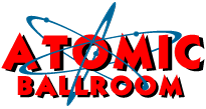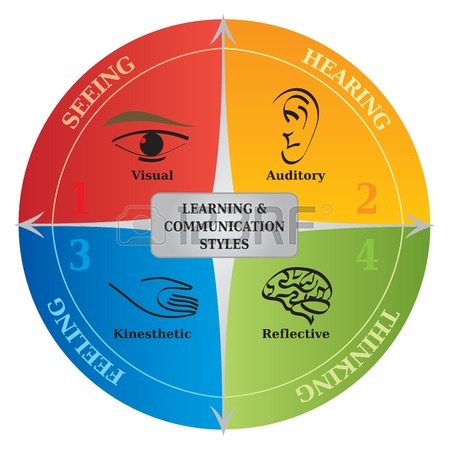So you’re taking dance classes, whether for the first time or as a long time participant, and you’re wondering what’s the best way to retain all of the information being thrown at you? There is no one way for everyone as we all learn differently. However, incorporating one or more of the following methods is a sure fire way to make things easier while making your overall experience more enjoyable.
To help with the memorization of choreography, and overall improvement of technique try one or more of the following learning methods:
1. Visual
There are a number of visual methods of learning from studying the way the instructor and fellow classmates move, to watching others on sites like YouTube or other multi-media platforms. It’s incredible to think that a decade ago this medium wasn’t even around, but has since become one of the leading forms of learning, and not just dance, but countless other areas as well. Here you can study choreography and other details, viewing it over and over until it really sinks in.
You can also watch yourself back on video to look for less obvious things such as placement, lack of extension or even facial expressions you may make. You can make adjustments and catch things you may not otherwise notice while moving and watching yourself in a mirror, such as poor posture, whether or not you’re pointing your toes and other things that could be easily overlooked.
2. Auditory
It is always good to familiarize oneself with whatever music is being used, as this fosters a greater connection and helps improve rhythms and timing. Many top choreographers even choreograph and teach using “musical metaphors” or sound effects, showing off their connection with the music. Instead of counting all the time or always using names for certain moves, they will make percussive-type sound with their voices to emphasize tempo, intensity and especially the counts.
https://www.youtube.com/watch?v=pDOCux722vE
Example of sound effect vocalizations used by many choreographers in this class by Les Twins.
The more you study the music and then mark choreography using the it, the more fluid the piece should be.
3. Tactile / Feel
This is essential, especially when dancing with a partner. As the sufficient connection needs to be established between the leader and follower in order to perform much beyond a simple basic in most styles. Some styles like swing or salsa require a more firm grip of the hands to allow for sufficient tension used to generate the momentum for explosive movements; whereas in dances like kizomba the grip between partners is generally much lighter, as the dancing couple’s bodies are generally pressed together more firmly.
When solo dancing, it is good to feel the floor. I mean really connecting with the floor by grounding oneself into movements (in dance styles which allow for it). Try using different shoes, ore even practicing barefoot (when possible), and see how differently you feel when you’re able to feel each little muscle and tendon in your feet.
4. Counter visual
In other words, try closing your eyes for a moment, or if you’re a bit more daring and in a safe space with someone close by who can help guide you, you could even try moving a bit with a blindfold. If the thought of prancing around totally blind makes you nervous, then just try closing your eyes for a moment or two while holding onto another person, wall or other sturdy object, and as you move allow yourself to really connect with the rhythm, tempo and any other elements you can grasp onto.
5. Jot it down/take notes
By putting ink to pen, or nowadays stylus pen to handheld device, since so many people use their phones or tablets to jot down notes, via voice command or typing. Whichever method you prefer, writing things down has been proven to be an effective method of learning by re-enforcing the information you’re taking in, ultimately solidifying it into your muscle memory.
For ages and ages, this has proven to be a great method of study, both academic and artistic. So whether you note down specific choreography or just general ideas, it will all ultimately help to organize thoughts, aid memorization and facilitate learning. This is also particularly helpful in cases where videotaping is not allowed.
6. Review your notes
Or go over a class syllabus if available. Don’t just stuff them in the bottom of your bag, never to see light of day again. Be sure to take a moment to review them after class, before bed, or whe never you can, the sooner the better.
7. Repeat, repeat, repeat!
Repetition is key. Whether you’re repeating random steps or a specific choreographed sequence, actually doing them over and over will allow you to reach the point of being able to move more freely without having to think as much. It will also caide the moves to feel more natural. Whichever combination of techniques you find works best for you, just be sure to consistently work at it them. The more you do them, the sooner they become part of your muscle memory.
8. Reflection
Just thinking about what you learned or are working on is another way to review. Much like singing song lyrics to yourself over and over, eventually it becomes second nature and the song can become part of your consciousness and stay in your head for a longtime… even a lifetime.
9. Ask questions
Ask the teacher as well as other students to clarify material you’re unsure of. You might end up asking something that several other people were also wondering. Also, it could cause the instructor to elaborate further on something beyond what they might have otherwise done, therefore adding more detail to the lesson.
Just remember, like with anything in life, the more you practice, the better you become. Practice makes perfect! So get out there and practice those moves!

